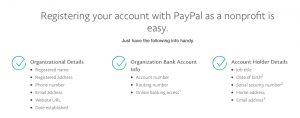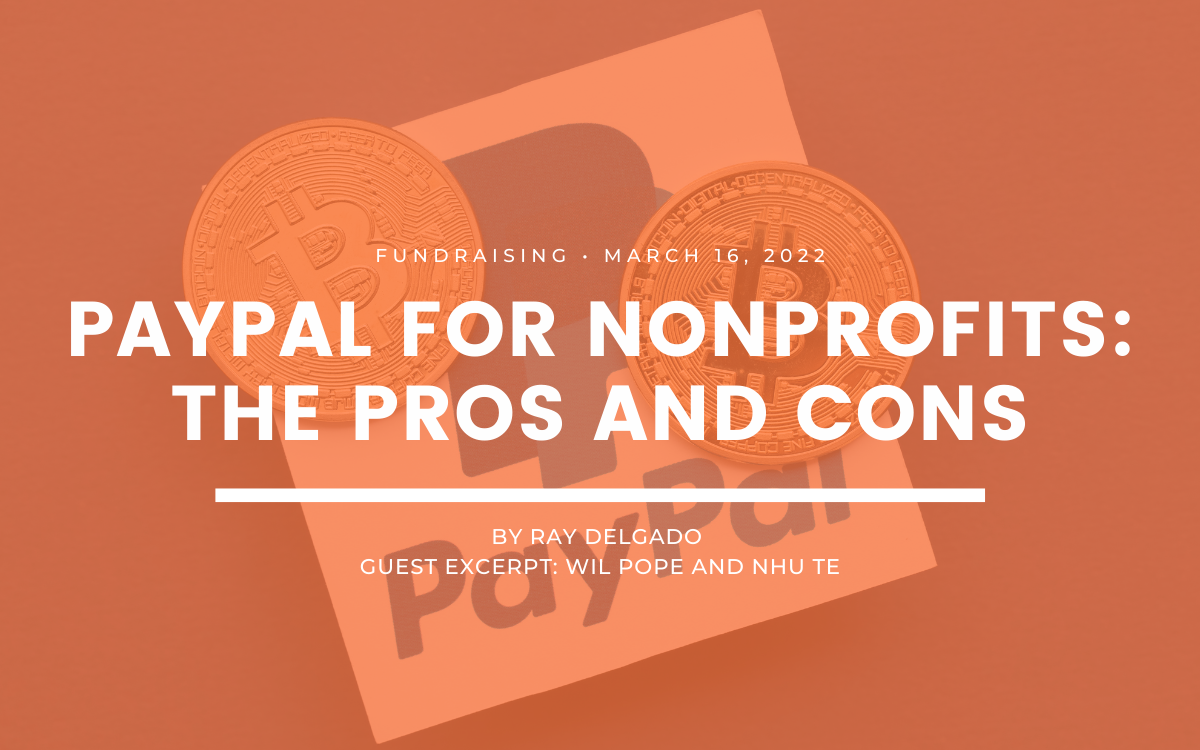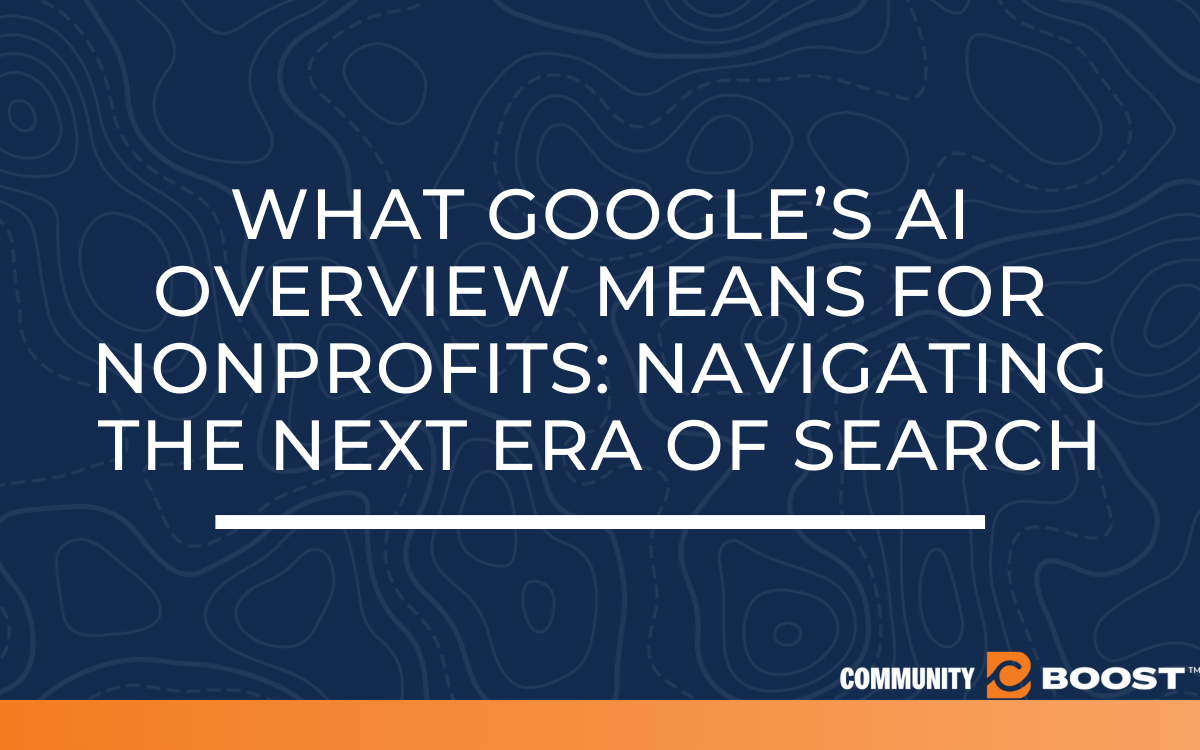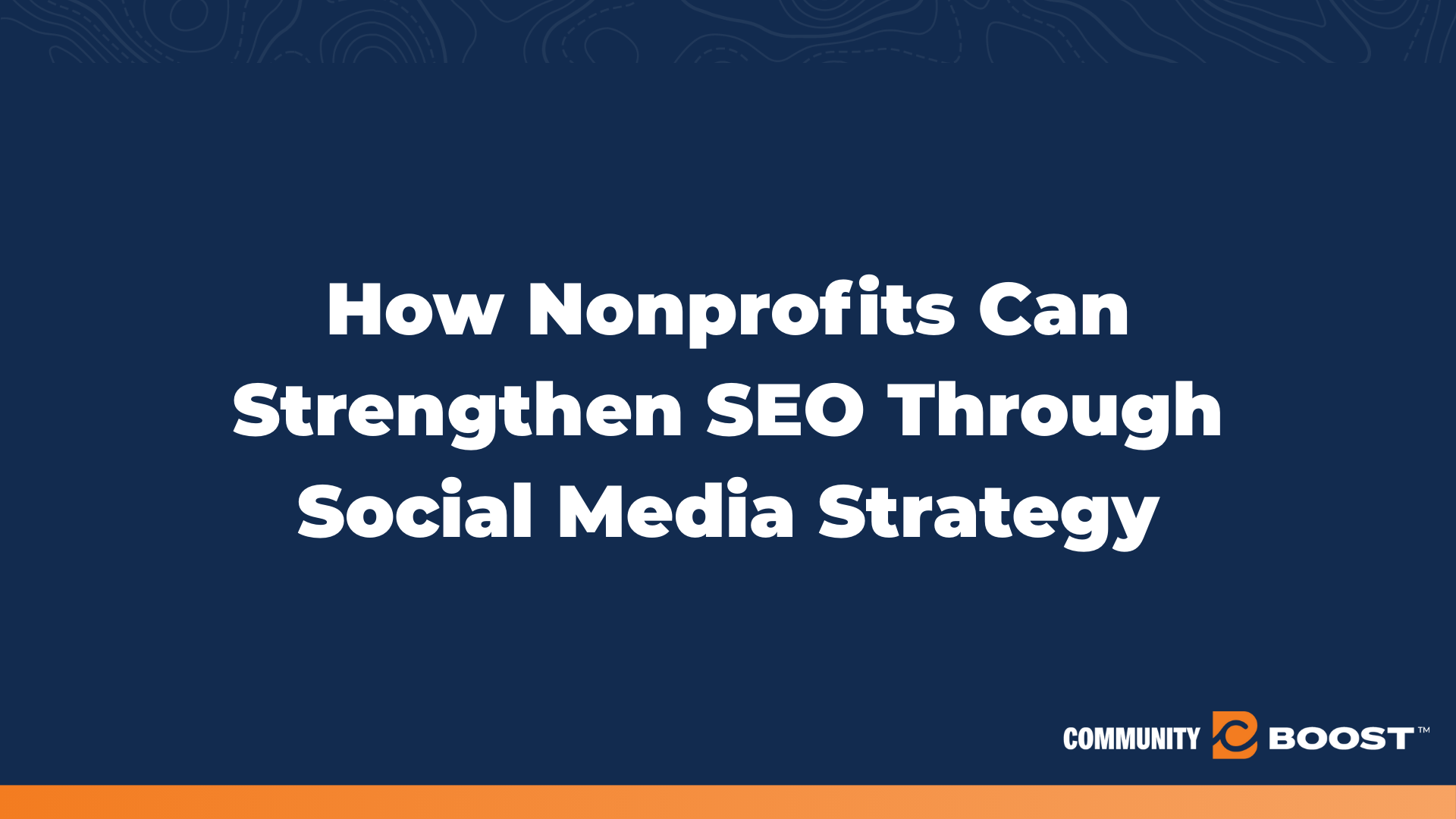Paypal for Nonprofits: The Pros and Cons
5.5 min to read ✭ In this blog, you’ll learn the benefits and challenges of using Paypal for nonprofits and how to get started.
If you’re not offering donors the option of using PayPal to make donations, you’re missing out. Thankfully, we’re here to help!
PayPal for nonprofits is a game-changer for fundraising because it is a trusted brand that is heavily used by consumers and they make it relatively easy for nonprofits to set up. Once you are set up, you’re practically guaranteed to see an increase in donations because potential donors trust the transaction, appreciate that they do not need to turn over credit card info directly to you, and are likely already set up to use PayPal for a variety of their needs.
Let us break it down for you…
What Is Paypal?
PayPal is an online global payment processing software that is heavily used by individuals to send or receive money to friends or family and to pay for online purchases. Most e-commerce sites and nonprofits also use the service as a recommended form of payment or donations in addition to or in lieu of credit card transactions.
With PayPal, a user registers a credit card or bank account with their account and is then able to send or receive money with just an email address of the other party. The money is credited to the recipient’s account and can then be transferred to a bank account, or held onto for future use to make a payment.
PayPal customers also appreciate that they are not charged fees for transactions if they are using their bank accounts or PayPal credits. Only credit card transactions and vendors selling goods see nominal transaction fees.
Get More Donations During Year-End
How To Set Up Paypal For Nonprofits
Not only is PayPal easy to set up but they offer a discount for nonprofits! Under a new pricing plan, PayPal’s processing fee for donations is 2.89% + $0.49 per transaction. However, registered 501(c)(3) charities are eligible to pay just 1.99% + $0.49 per transaction so it really pays off to set up your account properly. The only possible downside of using PayPal for donations is if your donor base typically gives in such small quantities that the $0.49 transaction fee is too much of a hit.
Ready To Give Paypal For Nonprofits A Try?
Follow these three steps provided by PayPal:
Step 1: Register
You’ll need to sign up for a business account and register as a nonprofit in order to receive donations. If you are a 501(c)(3), learn how to become a PayPal confirmed charity to receive the discounted rate.
Step 2: Know your options
Spend a little time researching which of the many PayPal options will work best for your organization, including a pro option and invoicing solutions.
Step 3: Add a Donate button to your site that’s integrated with PayPal
Follow these step-by-step instructions.
Be sure to have the information below ready to go when you’re signing up.

The Benefits Of Using Paypal For Nonprofits
1. As we’ve said before, using Paypal for Nonprofits makes great business sense and if you’re not already using it, potential donors will notice because they’re so used to seeing it everywhere. It’s like going to a store that doesn’t accept VISA cards–bad, bad, bad.
2. Mobile donations are continuing to rise, meaning users expect a quick and easy process, particularly younger donors (read more about how to market to younger donors here). Most of them already have PayPal accounts that are accessible in one or two clicks and are much easier to use than hunting down and inputting credit card information. The process is even easier to use once you’ve installed the PayPal donate button on your site, which allows you to set up specific donation suggestions and recurring payment plans, among other features.
3. Another huge bonus in using PayPal for nonprofits is that PayPal is a leader in integrations with other third-party apps to facilitate other activities like charity events, auctions, fundraising galas, annual retreats, online merchandise stores, trivia tournaments, etc.
The Challenges Of Using Paypal For Nonprofits
Of course, no platform is perfect and there are a few disadvantages or concerns that you should be aware of when using PayPal.
We’ve already mentioned the costs above but it can add up and there are other donation platforms that take a smaller cut that you might want to consider (more on that below). Some of the alternatives are even better than PayPal at encouraging donors to cover the transaction fees, which most will do if asked, allowing you to keep 100% of their intended donation.
PayPal doesn’t want your branding over its own. They don’t allow you to create an engaging fundraising page, set up events or sell tickets, or contribute to a lively supporter feed on their platform. You can add your logo and that’s about it, which isn’t a great experience for your donors should they need to navigate over to the PayPal site to complete their transaction.
Additionally, there are other forms of donating that PayPal doesn’t support but are increasingly popular, such as mobile wallets like Apple Pay and Google Pay. Moreover, nonprofits are among the most avid users of text-to-donate fundraising campaigns, which PayPal for nonprofits doesn’t support.
Alternatives To Paypal For Nonprofits
If the concerns raised above give you pause, perhaps it’s a good idea to research the alternatives. Three of the best rivals were designed with nonprofits in mind and typically have lower fees and nonprofit-specific needs in mind. Check these three out:
Venmo For Nonprofits
Excerpt by Wil Pope and Nhu Te from Fundraise Up
Today’s donors are seeking positive experiences with the organizations they interact with. Just take a look at the e-commerce industry: Consumers don’t just want good products; they also want memorable experiences associated with them. Amazon has created recognition for itself for providing hyper-personalized experiences for its customers — like offering recommended products based on previous shopping activity or giving customers the one-click checkout option.
For nonprofits looking to improve relationships with their donors and simultaneously boost retention, ask yourself: Does your donor experience give a lasting impression?
Offering a variety of donation payment methods is a great way to give your donors more personalized experiences. Thanks to digital innovation, there is a wide range of donation payment options — like digital wallets. One digital wallet that is rapidly gaining traction among younger donors is Venmo.
With 90 million users, this popular app-based payment service holds a lot of donation potential for nonprofits. Since many of your donors are already using Venmo every day to pay their bills, buy merchandise from their favorite vendors, and easily split the bill with their friends and family members for shared experiences, it should be a no-brainer to add this popular digital wallet to your growing donation payment portfolio.
When it comes to making donations with Venmo, there are a few things to consider:
- Venmo is very popular with younger donors, with 35% between ages 18 and 29 years of age. Offering this donation payment option not only provides a better experience to younger donors but also increases donor conversions.
- Venmo donations are processed by Paypal, and we’ve seen that offering Paypal as a payment method increases conversion by 10%.
- While Venmo is built for mobile, the donor will be directed to their phone to complete the donation if they’re using a desktop computer, which adds a small friction point to the donation process.
- Donations through Venmo are limited to the U.S. only, so your international donors will not be able to make donations through the app.
Fundraise Up now accepts Venmo as a donation payment method, along with Apple Pay, Google Pay, Plaid, Click to Pay, Paypal, credit cards, and a variety of country-specific direct debit options.
To alleviate any concerns about whether or not Venmo donors receive donation tax receipts, rest assured that once someone makes a donation through Venmo, they will receive an email receipt in addition to a push notification from the Venmo mobile app.
Ready to learn more about Fundraise Up and Venmo? Get to know one of our team members!
So Will You Use Paypal For Your Nonprofit?
We hope you can see the upsides in using PayPal for nonprofits and want to proceed. The benefits outweigh the downsides, particularly because they make it so easy to set up and your donors are likely familiar with using PayPal. So give it a try and let us know how it goes!





